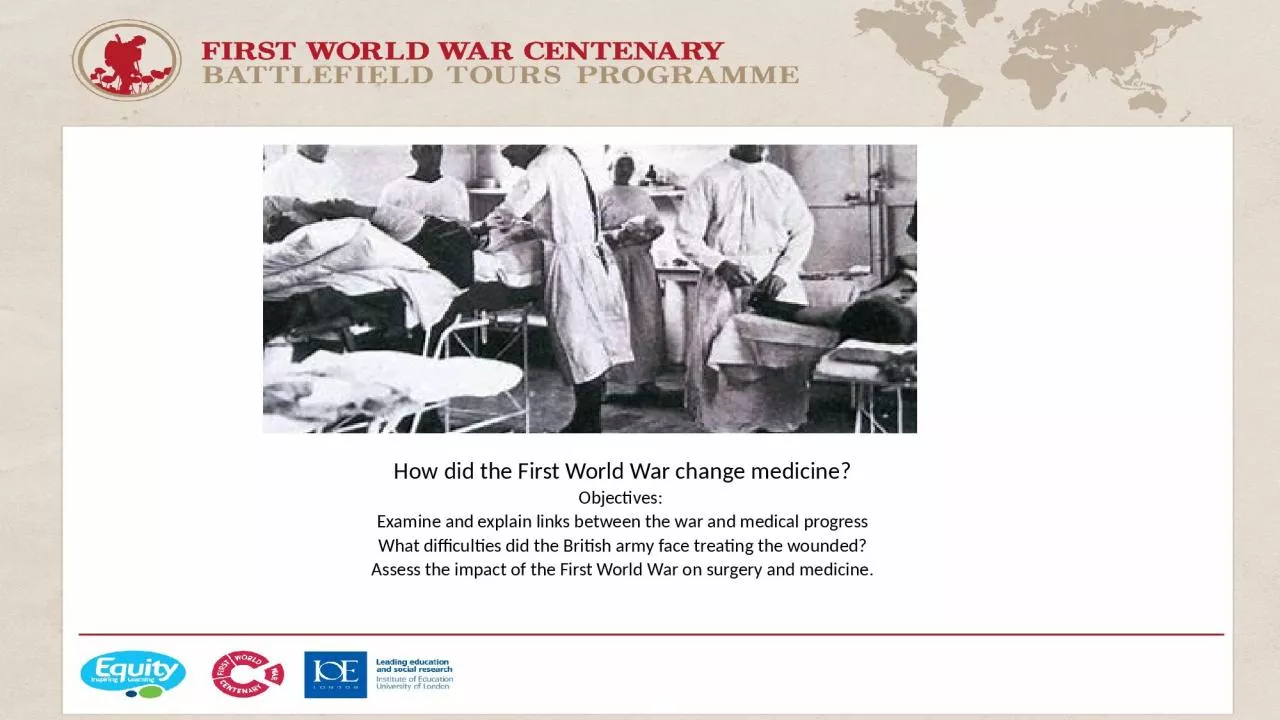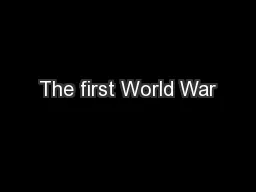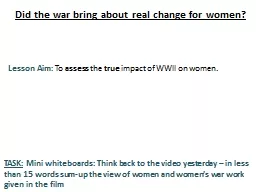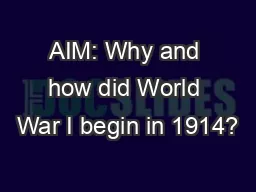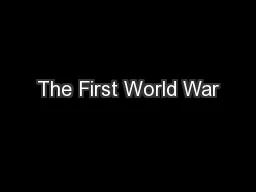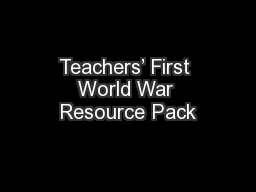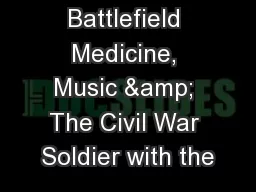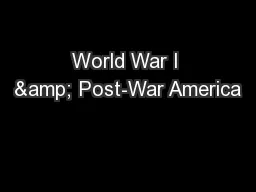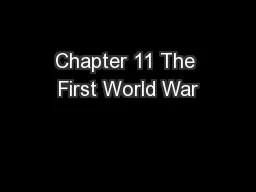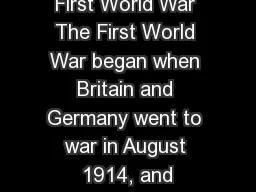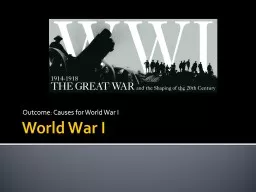PPT-How did the First World War change medicine?
Author : caroline | Published Date : 2024-01-29
Objectives Examine and explain links between the war and medical progress What difficulties did the British army face treating the wounded Assess the impact of
Presentation Embed Code
Download Presentation
Download Presentation The PPT/PDF document "How did the First World War change medic..." is the property of its rightful owner. Permission is granted to download and print the materials on this website for personal, non-commercial use only, and to display it on your personal computer provided you do not modify the materials and that you retain all copyright notices contained in the materials. By downloading content from our website, you accept the terms of this agreement.
How did the First World War change medicine?: Transcript
Download Rules Of Document
"How did the First World War change medicine?"The content belongs to its owner. You may download and print it for personal use, without modification, and keep all copyright notices. By downloading, you agree to these terms.
Related Documents

